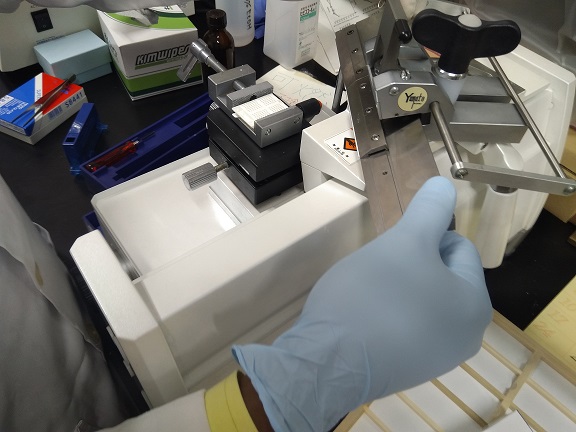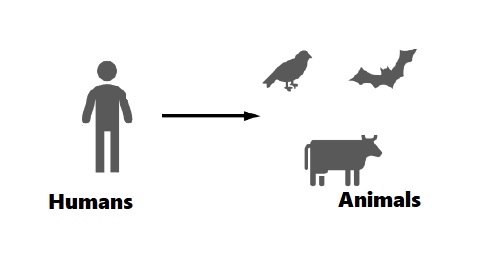Experimental epidemiological study can also be referred to as clinical trials. It is an analytical epidemiological study that examines the role of some specific agents in the treatment or prevention of a particular disease in a population. An experimental epidemiological study usually involves two phases of study in terms of their design: experimental study for therapeutic (clinical) purposes and experimental study for preventive (prophylactic) purposes.
Experimental epidemiological study resembles closely the controlled laboratory experiments carried out in hospitals and research institutes. In this type of study, the investigator can control the exposure and regulate all important part of the experimental conditions while allowing the subjects (who are living members of the population under study) to differ for the sole purpose of hypothesis testing.
Experimental epidemiological studies are normally undertaken when investigators are learning about the possible treatment and prevention interventional measures that are most suitable for a particular disease in a community/population. It is an interventional study in which the researcher randomly assigns subjects or participants of the study to either a test (treatment) group or a comparison (control) group, and this allows the investigator to control (to an extent) all the conditions of the experiment making sure that the participants and even the researcher has no direct influence on the assignment or allotment of groups.
Experimental epidemiological studies are scarcely undertaken and when carried out, they are often limited to interventional measures that are assumed to have huge putative health benefits to the beneficiaries and human population at large. A typical example of this type of study is when a researcher randomly selects mice or rats and exposes them to a substance or agent that is known to initiate a particular disease process in them (e.g. cancer). This group of mice or rat is known as the treatment (test) group.
He or she then goes ahead to select another group of mice or rat that will not be exposed to the disease agent, and this group is called the control (comparison) group. Finally, the investigator monitors and records the rate with which the disease develop in each of the groups (test and control) in order to get a clue as to the factual disease agent, progression of disease and possible prevention and treatment measures.
The result of such a study can be extrapolated to the human population (owing to the perceived physiological and biochemical similarities between animals and humans) and, in some scenarios; such experiments can also be carried directly on human subjects (e.g. testing a novel treatment) only when proper ethical and subjects consent have been properly obtained. Experimental studies are usually the gold standards of epidemiologic research but they are nevertheless without some ethical concerns and, these issues limit their usage and application by epidemiologists in the unraveling of disease origin and their possible containment.
There is a high validity of results from an experimental epidemiological study because such studies are scientifically undertaken in the laboratory, hospital or clinics, and the investigator does not act as a passive observer of events (as is the case in observational epidemiological studies) but rather actively manipulates the processes of the study.
Experimental epidemiological studies may include the following:
- Randomized control trial: In this type of experimental epidemiological study, participants are divided into two groups in a randomized manner i.e. the control and test group. One group (the test group) is given the actual drug or agent being tested while the other group (control group) is not given a treatment at all or given a placebo treatment (i.e. an inactive treatment).
In randomized control study which can also be known as clinical trials, both the researcher and the subjects of the study (test and control groups) are totally unaware (or blinded) as to which group is being treated and which one is not until the result of the treatment (experiment) is measured after comparing both groups in the study. The main purpose of this type of study is to test and evaluate novel treatment of a particular disease condition in a population.
Clinical trials are used to measure the effectiveness or cause-effect of an epidemiological intervention and, they are usually undertaken in hospital clinics among patients that already have the disease being studied (i.e. data collection takes place in the hospital). They provide the evidence on the relationship between exposure and effect.
- Field trials: Field trials are experimental studies that make use of data obtained from the field (i.e. from healthy individuals of the general population that are suspected to be at risk of acquiring a particular disease). This type of study is generally accomplished outside the clinics or hospital environment (i.e. in the fields) where they work with members of the general population that are disease-free.
Field trials are usually expensive to conduct and complicated. The main aim of field trials is to evaluate the effectiveness of an agent or a treatment in reducing the risk of developing a particular disease in the group of individuals selected for the study and who are free from the disease being investigated.
In field trials, a whole population, school, marketplace or household other than individuals can also be used as the disease-free group for the study. Field trials scarcely investigate the occurrence of health effects but rather they evaluate measures aimed at reducing exposure to a particular disease.
- Community trials: Community trials are field trials in which a whole community, school, marketplace or household are used as the unit of allocation (i.e. group allotment) in the study. In this type of epidemiological study, the treatment groups are communities or groups of people rather than individuals (which is obtainable in a field trial).
Community trials are usually used to investigate diseases (e.g. cardiovascular diseases) that are influenced by certain socio-economic factors, and such studies are limited in that it does not involve randomization of participants in the study and other socioeconomic conditions that may erupt in the course of the study cannot be easily controlled.
USES OF EXPERIMENTAL EPIDEMIOLOGICAL STUDIES
- They are used to test novel treatments and drugs.
- They are used to evaluate new ways of delivering public health services.
- They are used to evaluate novel health care and medical technology.
- They are used to evaluate new medical screening techniques and other laboratory testing methods.
MERITS OF EXPERIMENTAL EPIDEMIOLOGICAL STUDIES
- They are most suitable for the investigation of novel research questions (e.g. testing of a new drug, surgical method or a treatment protocol).
- Experimental epidemiological studies produce evident relationship between cause and effect.
- The results of such studies are usually termed to be scientifically accurate because they resemble controlled laboratory investigations.
- This type of study eliminates bias since two identical groups (test and control) receiving different form of treatment is compared.
- It is a prospective type of study that follows a disease outcome into the future and, the blinding of subjects in this study helps to reduce bias that may arise in the evaluation of the results.
DEMERITS OF EXPERIMENTAL EPIDEMIOLOGICAL STUDIES
- They are capital intensive.
- They require much time to accomplish.
- There can be covert or overt non-compliance of subjects or participants in this type of study. Covert non-compliance occurs when a subject modifies his or her treatment schedules or entirely stops taking the assigned treatment without informing the researcher.
Overt non-compliance occurs when a participant informs the investigator that he or she is dropping out of the study. Issues arising from the non-compliance of subjects in the study can be addressed by introducing a compliance verification protocol into the study design.
- They deal with a lot of ethical issues.
- It usually requires a large number of participants.
References
Aschengrau A and Seage G.R (2013). Essentials of Epidemiology in Public Health. Third edition. Jones and Bartleh Learning,
Aschengrau, A., & G. R. Seage III. (2009). Essentials of Epidemiology in Public Health. Boston: Jones and Bartlett Publishers.
Bonita R., Beaglehole R., Kjellström T (2006). Basic epidemiology. 2nd edition. World Health Organization. Pp. 1-226.
Halliday JE, Meredith AL, Knobel DL, Shaw DJ, Bronsvoort BMC, Cleaveland S (2007). A framework for evaluating animals as sentinels for infectious disease surveillance. J R Soc Interface, 4:973–984.
Lucas A.O and Gilles H.M (2003). Short Textbook of Public Health Medicine for the tropics. Fourth edition. Hodder Arnold Publication, UK.
MacMahon B., Trichopoulos D (1996). Epidemiology Principles and Methods. 2nd ed. Boston, MA: Little, Brown and Company. USA.
Nelson K.E and Williams C (2013). Infectious Disease Epidemiology: Theory and Practice. Third edition. Jones and Bartleh Learning.
Porta M (2008). A dictionary of epidemiology. 5th edition. New York: Oxford University Press.
Rothman K.J and Greenland S (1998). Modern epidemiology, 2nd edition. Philadelphia: Lippincott-Raven.
Rothman K.J, Greenland S and Lash T.L (2011). Modern Epidemiology. Third edition. Lippincott Williams and Wilkins, Philadelphia, PA, USA.
Discover more from Microbiology Class
Subscribe to get the latest posts sent to your email.





